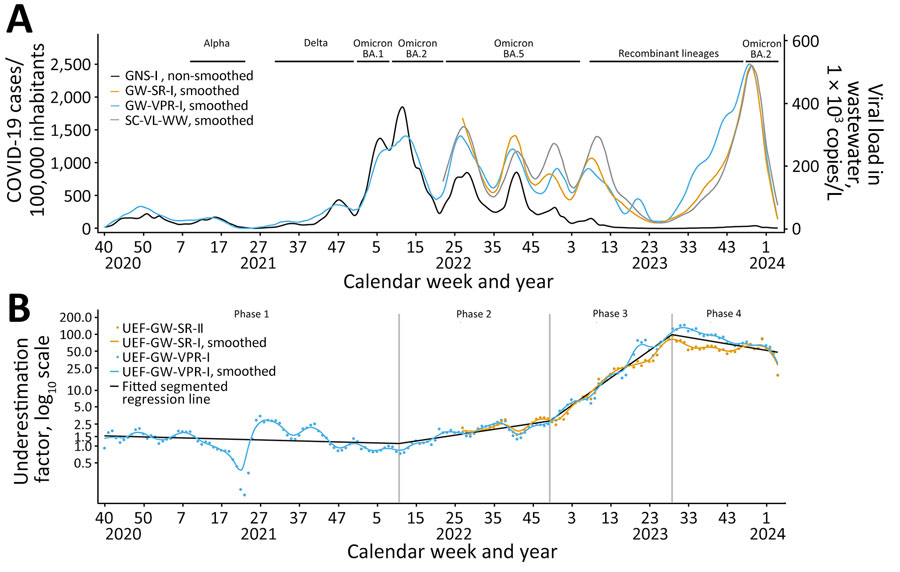Volume 30, Number 9—September 2024
Dispatch
Participatory, Virologic, and Wastewater Surveillance Data to Assess Underestimation of COVID-19 Incidence, Germany, 2020–2024
Figure

Figure. Incidence and underestimation factors in a study of participatory, virologic, and wastewater surveillance data to assess underestimation of COVID-19 incidence, Germany, 2020–2024. A) Smoothed and unsmoothed surveillance data on COVID-19 incidence (cases/100,000 adult population) compared with wastewater viral load. SARS-CoV-2 variant phases in Germany are labeled. B) Two different UEFs plus common piecewise trendline of smoothed UEF and timeframes for phases calendar week 40 of 2020 through calendar week 4 of 2024. Vertical lines mark the breakpoints between COVID-19 phases with different degrees of underestimation. GNS-I, incidence from German notification system; GW-SR-I, GrippeWeb self-reported incidence; GW-VPR-I, GrippeWeb and virologic positivity rate incidence; SC2-VL-WW, aggregated SARS-CoV-2 viral load in wastewater; UEF, underestimation factor.
1These first authors contributed equally to this article.